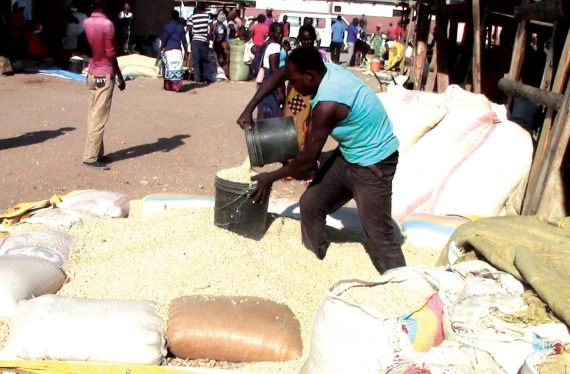In positive developments, the price of Akshar cement has been slashed to MK16,000, bringing relief to consumers. Furthermore, recent findings from a survey conducted by the Centre for Social Concern (CfSC) indicate a 2.6 percent increase in the cost of living for a family of six in February, totaling K503,876. This rise marks a contrast to the previous period from December 2023 to January 2024, which saw a notable surge of 7.8 percent to K491,037.
Throughout the review period, Lilongwe witnessed a significant downturn of 16.4 percent, while Zomba remained stable. Blantyre experienced a modest decline of 3.8 percent, Mzuzu recorded a slight increase of 2.4 percent, and Mangochi notably decreased by 14.3 percent. However, Karonga stood out with a significant 11.8 percent surge in maize prices, potentially impacting the overall cost of living for households.
Reads the CfSC report: “Delving deeper, it becomes evident that maize, a staple commodity deeply entrenched in Malawian livelihoods, stands as the linchpin influencing these fluctuations.
“The fluctuations in maize prices underscore its pivotal role as a determinant of the cost of living in Malawi. Understanding these dynamics empowers policymakers and stakeholders to devise targeted interventions aimed at mitigating economic vulnerabilities and fostering sustainable livelihoods for communities across the nation.”
The centre says reducing maize prices and ensuring a continued reduction in the cost of living among low-income earners in Malawi requires a multi-faceted approach that involves various government policies and interventions.
Among others, the centre has suggested continued and possibly expanded agricultural subsidies and market regulation to prevent price manipulation, market information systems to provide farmers with timely information and diversification of agricultural production beyond maize to reduce dependency on a single crop and mitigate the impact of maize price fluctuations on the cost of living.
Meanwhile, pressure on maize prices in most produce markets in the country has continued to decline, with retail prices falling by an average of 12 percent in February amid rising supplies from Agricultural Development and Marketing Corporation.
According to a February 2023 Monthly Maize Market Report by International Food Policy Research Institute (Ifpri), weekly average maize prices dropped from K880 per kilogramme (kg) in the final week of January to K771 per kg, or K38 550 per 50kg bag, in the final week of February, representing a 12 percent drop.
On the other hand, Malawi’s year-on-year headline inflation rate for February 2024 eased by 1.5 percentage points to 33.5 percent due to a drop in food prices despite non-food prices slightly increasing, according to National Statistical Office (NSO).
This means that prices of goods and services in the month under review increased at a decreasing pace.
Consumers Association of Malawi executive director John Kapito said the drop in prices is good as consumers will be relieved.
He said any maize price surge is a threat to consumers, given the significance of maize in the country’s Consumer Price Index (CPI), an aggregate basket of consumer goods and services used for computing inflation.
“Any rise in maize prices comes as a blow because this ultimately pushes up prices of everything,” said Kapito.
As part of the food component, maize contributes about 53.7 percent of the CPI, which means any movement in the price of maize has a direct bearing on consumers.













